Above: Picture of a Portuguese-style matchlock gun adopted by the Chinese military as rendered in General Qi Jiguang's military manual
"Ji Xiao Xin Shu", edition of 1588. This weapon was copied from Japanese pirates who in turn had earlier copied the design from the Portuguese. The Chinese Imperial Forces had embraced this weapon enthusiastically. In 1558, a total of 10,000 of such weapons were manufactured for the Chinese Imperial Army by Chinese gunsmiths.

|
|
|
Above: Pics from the Chinese musket manual "Magically Efficient Tools" of 1598, authored by Zhao Shizhen:
A) Turkish musket B) Western (Portuguese-style) musket C) Zhao Shizhen's self-developed breech-loading musket.
During his time, he had copied the Turkish musket, then devised a breech-loading model based on
the Turkish musket and commissioned the manufacture of both for the Ming Imperial Court.
This breech-loading musket is most likely the world's earliest type of breech-loading musket.
|
|
|
Below: Pic from the above manual, Ming soldier with portuguese
musket in a kneeling position with a fork-clamp rest-peg
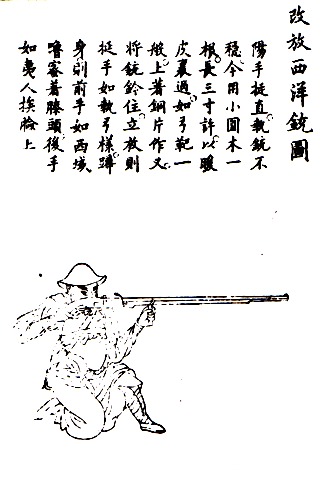
|
|
|
Below: Ming soldier with breech-loading musket
in a kneeling position with a fork-clamp rest-peg
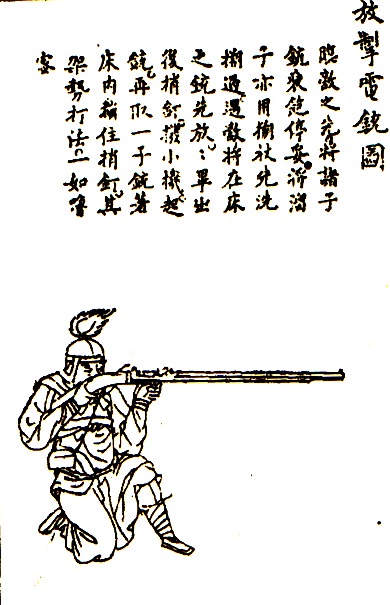
|
|
|
Another breech-loading musket developed by another fellow Chinese around 1606.
The pic shows the wooden stock, the main barrel, the removable chamber and the bayonent
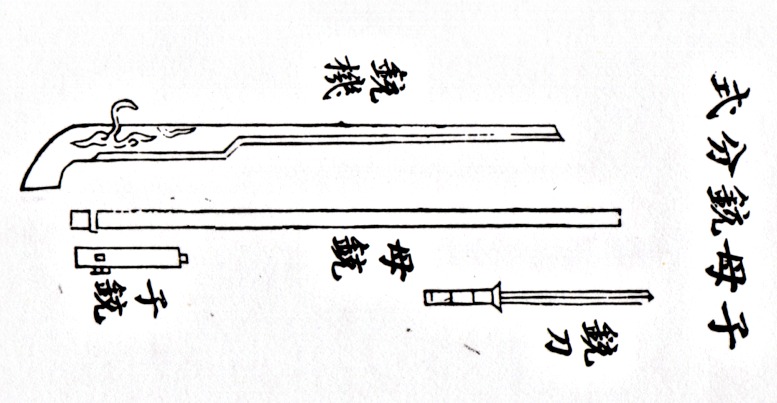
|
|
|
A flint-style lighting mechanism, most likely a wheelock, as depicted in a Ming firearms manual published in 1638.
Wheelocks were used by the later Qing Dynasty military as well
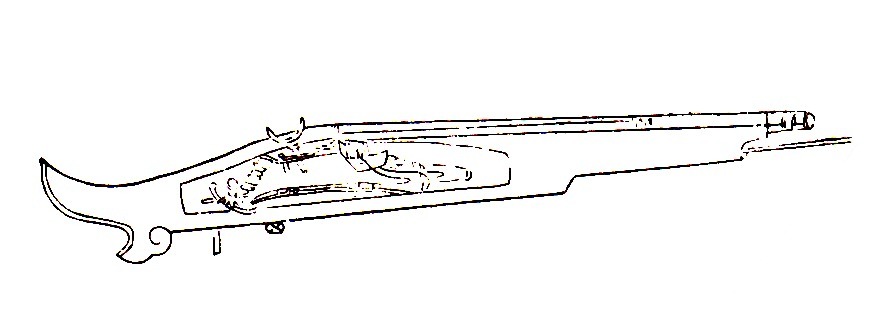
|
|
|
|
|
|
|
|
|
Armoured Ming soldiers in the 1620s-40s, with their muskets and 3-eyed guns, supported by non-armoured soldiers equipped with sabers and shields. General Qi has advocated firing off the 3-eyed gun at long range when the enemy is far away, afterwhich it would be used as a polearm in close-quarters fighting.
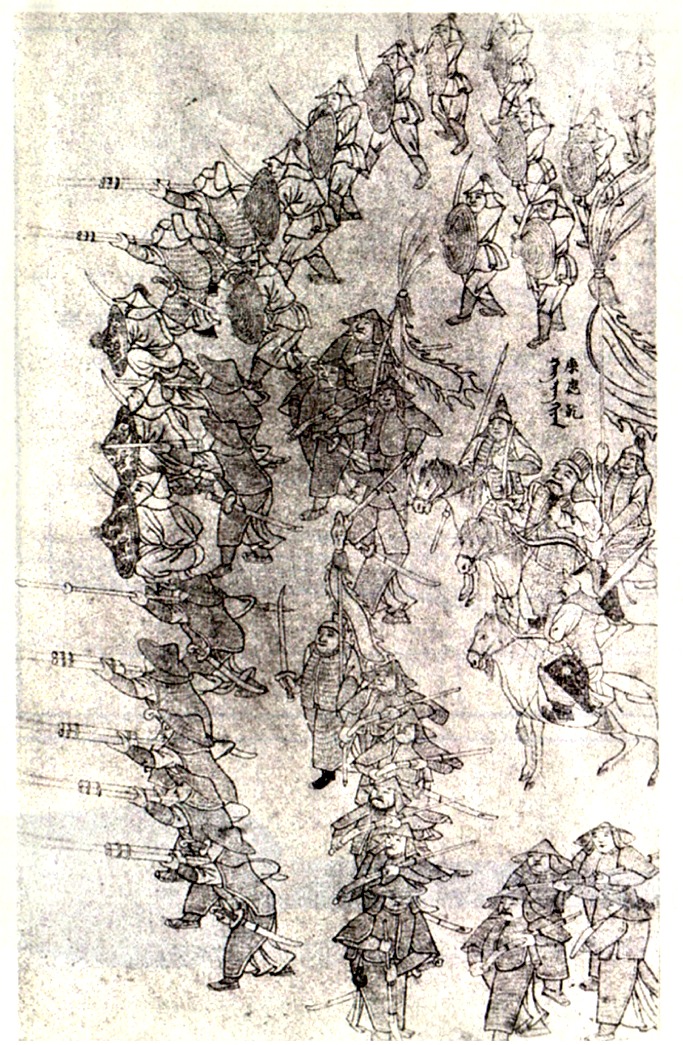
|
|
|
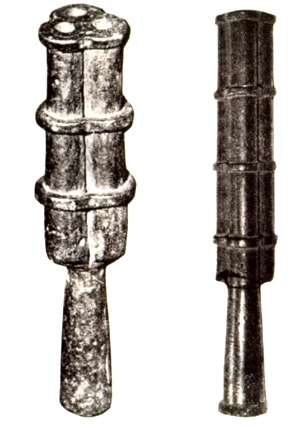
|
|
|
Ming Dynasty 3-eyed gun with hollow end
where a wooden shaft/handle was to be inserted.
|
|
|
|
|
|
|
|
|
|
|
|
|
|
|
|
|